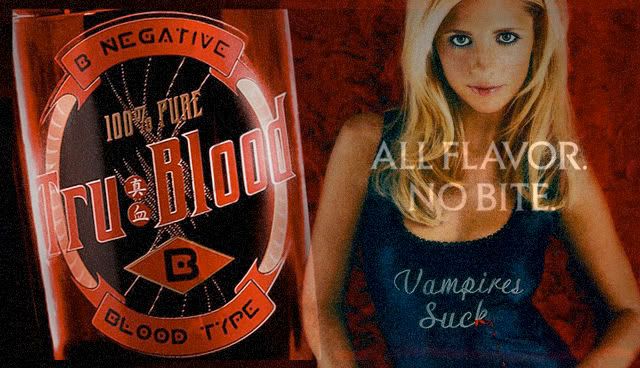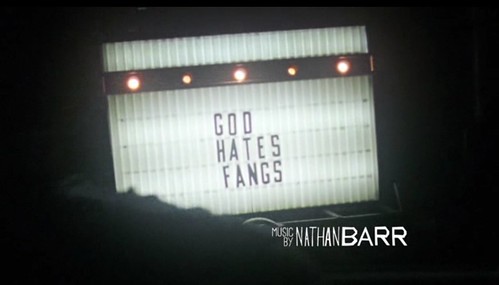 Supernatural phenomenon have acquired an unmatched presence within modern society, with television shows that are rich in detail, characters and narratives spiking spiritual interest among the public (Hjarvard, 2008, p. 9). Through various forms of media, religious symbols, messages and representations are being formatted to the genres of popular culture and are being transported into the mindsets of consumers (Hjarvard, 2008, p.12). This has become known as the “mediatization of religion” and is highly evident in numerous television shows that grace our screens each and every night.
Supernatural phenomenon have acquired an unmatched presence within modern society, with television shows that are rich in detail, characters and narratives spiking spiritual interest among the public (Hjarvard, 2008, p. 9). Through various forms of media, religious symbols, messages and representations are being formatted to the genres of popular culture and are being transported into the mindsets of consumers (Hjarvard, 2008, p.12). This has become known as the “mediatization of religion” and is highly evident in numerous television shows that grace our screens each and every night.
Two such shows that deal with supernatural themes are True Blood and Buffy the Vampire Slayer. Both of these shows focus on the vampire phenomenon, with clear spiritual symbols and messages apparent. These symbols are clearly evident within the title sequence of each. While True Blood offers original, non-characteristic opening credits, the title sequence of Buffy is similar to traditional television opening credits, but offers obvious visual depictions of the supernatural.
http://www.youtube.com/watch?v=vxINMuOgAu8
True Blood is an American television drama series that details the co-existence of vampires and humans in a fictional Louisiana town. The story focuses around Sookie Stackhouse, a telepathic waitress working in a small town populated by religious fanatics, redneck bigots, vampires, shape-shifters and seemingly every other supernatural or mythical creature known to man (Business Wire, 2008, para. 7). The show tackles issues like the mixing of cultures, notions of “the other”, religious fanaticism, racial discrimination, drug use, sex and violence, but does so in a way that has never looked or felt so good.
The opening sequence is composed of portrayals of the Deep South and is played to the song, “Bad Things” by Jace Everett. It explores ideas of redemption and forgiveness, progressing from morning to night and culminating in a baptism (Business Wire, 2008, para. 7). The scenes are all “point-of-view” shots and the jittery and uneasy nature of them makes the scenes appear to be seen through the eyes of a supernatural, predatory creature, lurking in the shadows. Some of the most notable scenes include the slow-motion effect on the rattle snake, which may be interpreted as a symbol of the devil, and the billboard announcing “God Hates Fangs”, which highlights the vampire’s sense of oppression, as much as it shows human’s fear of them. These are contrasted with jittery, fast-motion, recurring scenes of African-Americans “praising Jesus” in a Pentecostal church, depicting a world where the conflicting ecstasies of religion, sex and bloodlust share striking similarities.
creature, lurking in the shadows. Some of the most notable scenes include the slow-motion effect on the rattle snake, which may be interpreted as a symbol of the devil, and the billboard announcing “God Hates Fangs”, which highlights the vampire’s sense of oppression, as much as it shows human’s fear of them. These are contrasted with jittery, fast-motion, recurring scenes of African-Americans “praising Jesus” in a Pentecostal church, depicting a world where the conflicting ecstasies of religion, sex and bloodlust share striking similarities.
The powerful imagery also explores pairings of religious and sexual themes, with a hint of violence (Business Wire, 2008, para.7). One scene depicts a white preacher healing a black woman by wrapping his hand around her throat, which causes her to thrash violently in the throes of the Holy Spirit. This scene is embedded with flashes of writhing naked bodies, nudity and suggestive acts of sexual conduct, either consensual or non-consensual.
 These contradictory images of sex, violence and religion express how religious fanaticism and sexual energy can corrupt humans and essentially make them animalistic. The vivid and explicit characteristics of this sequence create the perfect introduction to what viewers can expect from True Blood.
These contradictory images of sex, violence and religion express how religious fanaticism and sexual energy can corrupt humans and essentially make them animalistic. The vivid and explicit characteristics of this sequence create the perfect introduction to what viewers can expect from True Blood.
It also distills the humorous, sexual, violent, sultry and spiritual vibe of the show, while at the same time allowing viewers to engage with a largely religious-driven portrayal of life in the Deep South and in True Blood.
http://www.youtube.com/watch?v=ahXcWTJTy1w
Much like True Blood, the opening sequence of Buffy the Vampire Slayer lets the audience know what sort of program it’s going to be. The series narrative follows Buffy Summers, a female slayer, who takes on the likes of vampires, demons and other supernatural forces of darkness. Buffy is surrounded by a loyal group of friends, and is known for her kick-ass, no-nonsense attitude. Although strikingly similar in looks to True Blood’s Sookie Stackhouse, Buffy is far from a push over, boasts enough girl power to last an impressive seven seasons and is very much anti-vampires (unlike the “fang-banger” Sookie).
audience know what sort of program it’s going to be. The series narrative follows Buffy Summers, a female slayer, who takes on the likes of vampires, demons and other supernatural forces of darkness. Buffy is surrounded by a loyal group of friends, and is known for her kick-ass, no-nonsense attitude. Although strikingly similar in looks to True Blood’s Sookie Stackhouse, Buffy is far from a push over, boasts enough girl power to last an impressive seven seasons and is very much anti-vampires (unlike the “fang-banger” Sookie).
The title sequence highligh ts the strong theme of good (or heroes) against evil within the Buffy series. Viewers are exposed to more shots of Buffy than any other character, which centres our gaze on her, while also highlighting the importance of the generic hero. Buffy, as the hero, wears bright and white clothes, while the “baddies” wear dark or black clothes, and are accompanied with images of monsters, weapons and demons. Many of these shots also take place within a dark, graveyard setting, while the shots of the hero display her in a good light, almost illuminating her beauty.
ts the strong theme of good (or heroes) against evil within the Buffy series. Viewers are exposed to more shots of Buffy than any other character, which centres our gaze on her, while also highlighting the importance of the generic hero. Buffy, as the hero, wears bright and white clothes, while the “baddies” wear dark or black clothes, and are accompanied with images of monsters, weapons and demons. Many of these shots also take place within a dark, graveyard setting, while the shots of the hero display her in a good light, almost illuminating her beauty.
Symbolism is also another important element of the sequence, with two consistent images remaining in the sequence throughout all seven seasons. Buffy’s cross, which was given to her by Angel in the first episode, remains a consistent symbol across all seven seasons (Phillips, 2003). Although it is used by Buffy to protect her from vampires, it is also the best known religious symbol of Christianity, demonstrating the religious themes that are inherent throughout the series. The Vampyr book is another consistent symbol, and although is a guide for Buffy in how to slay vampires, can be seen as a representation of a holy book that is a symbol of so many world religions.
These symbols, in both True Blood and Buffy the Vampire Slayer, indicate religion’s prominent presence within today’s mainstream media. These representations of the supernatural world are so rich in detail that they are able to perform social functions that at one stage, only religious institutions could perform (Hjarvard, 2008, p. 10). They also demonstrate the differing roles between religion and the media and how these often intertwine and perform the same functions. Some may argue that religion has become more oriented towards entertainment and the consumer (Hjarvard, 2008, p. 13), and while these television shows are highly entertaining and consumer driven, we are still able to recognise the religious and spiritual themes and symbols that underlie them.
Reference List
Business Wire. (2008, September 10). Doing Baptisms, Bars, and Bloodlust [Press Release]. Retrieved from http://www.redorbit.com/news/entertainment/1550089/doing_baptisms_bars_and_bloodlust/index.html
Phillips, B. (2003). Christian Symbolism in Buffy the Vampire Slayer. Retrieved from http://www.christian-fandom.org/ess-buffy.html


No comments:
Post a Comment